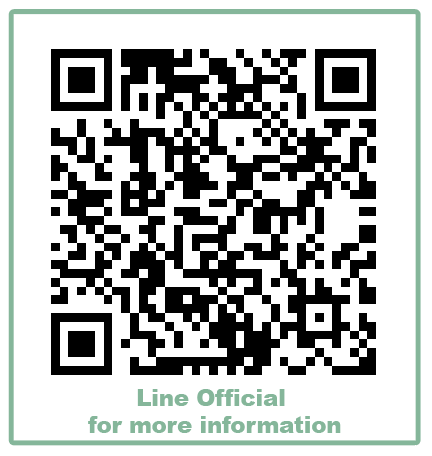การปฏิรูปการเรียนรู้ของหลักสูตรปฏิบัติการในห้องแล็บระดับอุดมศึกษาเพื่อส่งเสริมความยั่งยืน ในยุคหลังการระบาดของโรคโควิด 19
คำสำคัญ:
Higher Education, Instrumental Analysis, Post-COVID-19 Era, Sustainability, Integrationบทคัดย่อ
การระบาดของโรคโควิด 19 เป็นอุปสรรคและความท้าทายของทำให้หลักสูตรการปฏิบัติการในห้องแล็บ
ในขณะเดียวกันก็ส่งเสริมให้เกิดการการพัฒนาวิธีการสอนที่หลากหลาย และมีการพิจารณาไตร่ตรองวิธีการจัดการเรียนรู้การปฏิบัติการในห้องแล็บระดับอุดมศึกษาอย่างลึกซึ้งด้วย ในทางกลับกัน สื่อการสอนที่น่าเบื่อและคงเดิมกับ
แบบการทดสอบอย่างเป็นทางการเชิงทฤษฎีก็ส่งผลให้ผู้เรียนเฉื่อยชาและมีทัศนคติแบบขอไปทีต่อเรียนแบบทดลองด้วย การเผชิญหน้ากับอนาคตที่ไม่แน่นอนผนวกกับความเมินเฉยของผู้เรียน ทำให้จำเป็นต้องปฏิรูปหลักสูตรอย่างเร่งด่วน
เพื่อเสริมสร้างความยืดหยุ่น ความสามารถในการฟื้นตัว และผลสัมฤทธิ์การเรียนรู้ไปพร้อม ๆ กัน แนวทางการออกแบบหลักสูตรการเรียนรู้ที่สำคัญ คือ การใช้วิธีการสอนและสื่อการเรียนรู้ที่หลากหลายเพื่อส่งเสริมการพัฒนาที่ยั่งยืนในหลายมิติอย่างต่อเนื่องของระดับอุดมศึกษาภายใต้ความปกติใหม่ งานวิจัยได้ออกแบบรายวิชาการวิเคราะห์เครื่องมือการทดลองและสอบถามมุมมองและข้อแนะนำจากผู้เรียนด้วย จากนั้นจึงเปรียบเทียบผลการสอนกับการเรียนรู้ครั้งที่ผ่านมานับตั้งแต่เกิดการระบาดของโรคโควิด 19 ผลการวิจัยชี้ให้เห็นว่าหลักสูตรที่ออกแบบใหม่นี้ทำให้ผู้เรียนมีผลสัมฤทธิ์ทางการเรียนรู้ดีขึ้น
ทั้ง 3 ด้าน ผู้วิจัยมีความมุ่งหวังว่ารูปแบบการเรียนรู้นี้จะได้รับการพัฒนาอย่างต่อเนื่องเพื่อสามารถนำไปใช้อย่างกว้างขวางในสาขาวิชาอื่น ๆ ได้
References
Akram, H., Yingxiu, Y., Aslam, S., & Umar, M. (2021). Analysis of synchronous and asynchronous approaches in students' online learning satisfaction during Covid-19 Pandemic. In 2021 IEEE International Conference on Educational Technology (ICET), 203-207.
Akramy, S. A. (2022). Shocks and aftershocks of the COVID-19 pandemic in Afghanistan higher education institutions. Cogent Arts Humanite, 9(1), 1-18. https://doi.org/10.1080/23311983.2022.2029802
Bauer, C. F. (2008). Attitude towards chemistry: A semantic differential instrument for assessing curriculum impacts. Journal of Chemical Education, 85(10), 1440-1445.
Brandriet, A. R., Ward, R. M., & Bretz, S. L. (2013). Modeling meaningful learning in chemistry using structural equation modeling. Chemistry Education Research and Practice, 14(4), 421-430.
Chan, J. Y. K., & Bauer, C. F. (2014). Identifying at-risk students in general chemistry via cluster analysis of affective characteristics. Journal of Chemical Education, 91(9), 1417-1425.
Chans, G. M., Bravo-Gutiérrez, M. E., Orona-Navar, A., & Sánchez-Rodríguez, E. P. (2022). Compilation of chemistry experiments for an online laboratory course: Student’s perception and learning outcomes in the context of COVID-19. Sustainability, 14(5), 1-26. https://doi.org/10.3390/su14052539
Chase, A., Pakhira, D., & Stains, M. (2013). Implementing process-oriented, guided-inquiry learning for the first time: Adaptations and short-term impacts on students' attitude and performance. Journal of Chemical Education, 90(4), 409-416.
Dukes Iii, A. D. (2020). Teaching an instrumental analysis laboratory course without instruments during the COVID-19 pandemic. Journal of Chemical Education, 97(9), 2967-2970.
Elliott, M. J., Stewart, K. K., & Lagowski, J. J. (2008). The role of the laboratory in chemistry instruction. Journal of Chemical Education, 85(1), 145-149.
Fabriz, S., Mendzheritskaya, J., & Stehle, S. (2021). Impact of synchronous and asynchronous settings of online teaching and learning in higher education on students' learning experience during COVID-19. Front Psychol, 12, 733554.
Galloway, K. R., Malakpa, Z., & Bretz, S. L. (2015). Investigating affective experiences in the undergraduate chemistry laboratory: Students’ perceptions of control and responsibility. Journal of Chemical Education, 93(2), 227-238.
Hensen, C., & Barbera, J. (2019). Assessing affective differences between a virtual general chemistry experiment and a similar hands-on experiment. Journal of Chemical Education, 96(10), 2097-2108.
Hoque, E. (2016). Three domains of learning: Cognitive, affective and psychomotor. The Journal of EFL Education and Research, 2(2), 45-52.
Murphy, E., Rodríguez-Manzanares, M. A., & Barbour, M. (2011). Asynchronous and synchronous online teaching: Perspectives of Canadian high school distance education teachers. British Journal of Educational Technology, 42(4), 583-591.
Nogueira, T., Magano, J., Fontão, E., Sousa, M., & Leite, Â. (2021). Engineering students’ industrial internship experience perception and satisfaction: Work experience scale validation. Educ Sci 2021, 11(671), 1-12. https://doi.org/10.3390/educsci11110671
Ramsden, P. (1991). A performance indicator of teaching quality in higher education: The Course Experience Questionnaire. Studies in Higher Education, 16(2), 129-150.
Reardon, R. F., Traverse, M. A., Feakes, D. A., Gibbs, K. A., & Rohde, R. E. (2010). Discovering the determinants of chemistry course perceptions in undergraduate students. Journal of Chemical Education, 87(6), 643-646.
Reese, S. A. (2014). Online learning environments in higher education: Connectivism vs. dissociation. Education Information Technologies, 20(3), 579-588.
Songkram, N., Chootongchai, S., Khlaisang, J., & Koraneekij, P. (2021). Education 3.0 system to enhance twenty-first century skills for higher education learners in Thailand. Interactive Learning Environments, 29(4), 566-82.
Xu, X. Y., & Lewis, J. E. (2011). Refinement of a chemistry attitude measure for college students. Journal of Chemical Education, 88(5), 561-568.
Downloads
เผยแพร่แล้ว
How to Cite
ฉบับ
บท
License

This work is licensed under a Creative Commons Attribution-NonCommercial-NoDerivatives 4.0 International License.



